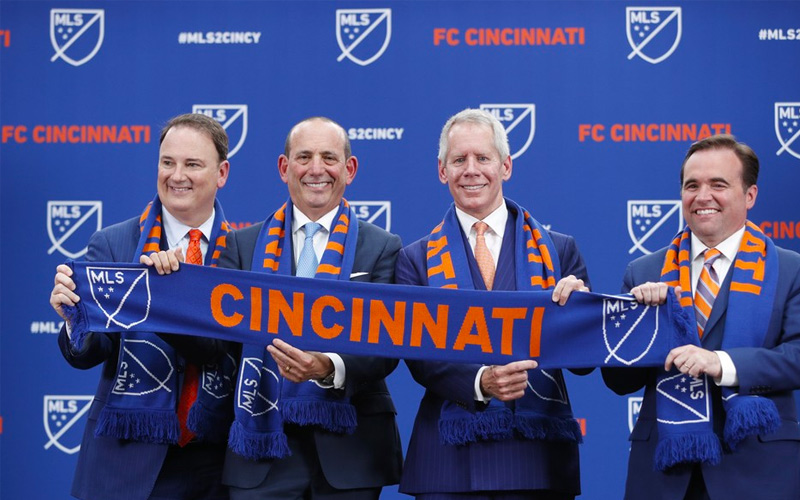In contrast to other top soccer leagues around the world, MLS operates under a salary cap system. The league imposes a maximum limit on the amount of money a team can spend on player salaries to maintain competitive balance and financial stability. The MLS salary cap, officially referred to as the Salary Budget, is set at $5,210,000 per team (Up 6.33% from the 2022 MLS salary cap – $4,900,000)
MLS roster rules include a variety of mechanisms to accommodate different player categories, such as Designated Players (DPs), Homegrown Players, and Generation Adidas players. DPs are high-profile players whose salary and acquisition costs exceed the salary cap, allowing clubs to invest in marquee talent without drastically affecting the budget. Homegrown Players and Generation Adidas players are typically younger players developed within a team’s academy or drafted from the collegiate level, respectively, and do not count against the salary cap.
Player Compensation
In 2020, the average player salary in MLS was around $410,000 per year, with the median salary being approximately $163,000. This figure is significantly lower compared to top European leagues, such as the English Premier League or La Liga. However, MLS has made progress in recent years, with player wages rising steadily as the league continues to attract higher-quality talent.
Club Revenues
Ticket Sales and Attendance
One of the primary sources of revenue for MLS clubs is ticket sales. In recent years, attendance at MLS matches has been on the rise. In the 2019 season, the league’s average attendance was over 21,000 fans per game, a notable increase from the early years of the league. With the addition of new teams and the expansion of soccer-specific stadiums, MLS has the potential to see further growth in attendance and ticket sales.
Revenue Sharing
Similar to other professional sports leagues in North America, MLS operates under a revenue-sharing model. This means that a portion of the league’s revenue, such as media rights and national sponsorship deals, is distributed among its member clubs. The goal of this model is to promote competitive balance and financial stability within the league.
Sponsorship Deals
National Sponsorships
National sponsorship deals are a significant source of revenue for MLS. The league has a number of high-profile sponsors, including Adidas, Coca-Cola, and AT&T. These multi-year agreements are worth millions of dollars annually and provide a reliable source of income for the league and its clubs.
Club-Level Sponsorships
In addition to national sponsorship deals, MLS clubs also secure their own local and regional sponsorship agreements. These deals can include jersey sponsorships, stadium naming rights, and other partnerships with local businesses. Club-level sponsorship deals vary in value depending on the market size and visibility of the team. For example, Los Angeles FC’s jersey sponsorship deal with YouTube TV was reportedly worth around $18 million over three years, while smaller-market teams may have deals worth significantly less.
Television and Media Rights
Domestic Broadcasting Rights
Television and media rights are another crucial source of revenue for MLS. In 2014, the league signed an eight-year deal with ESPN, Fox Sports, and Univision, reportedly worth $90 million per year. This deal marked a significant increase from the previous agreement and demonstrated the growing interest in MLS among American and Canadian broadcasters.
International Broadcasting Rights
As the popularity of MLS continues to grow globally, the league has expanded its reach through international broadcasting agreements. MLS has signed deals with broadcasters in over 190 countries, including Sky Sports in the United Kingdom and DAZN in Germany, Italy, and Japan. While the value of these international deals may not be as high as domestic agreements, they still contribute to the league’s overall financial growth and global exposure.
Merchandise Sales
Merchandise sales, such as jerseys, hats, and other fan apparel, are another revenue stream for MLS clubs. As the league’s popularity grows, so does the demand for team merchandise. Clubs can capitalize on this interest by selling products through their official stores, online platforms, and third-party retailers. Additionally, the league’s partnership with Adidas as the official supplier of team uniforms and fan apparel helps to promote sales and generate revenue for both the clubs and the league as a whole.
Future Growth and Challenges
MLS has made significant progress in its relatively short history, but there is still room for growth and improvement. The league faces several challenges as it continues to develop, including the need to further increase player salaries to compete with international leagues, improve the quality of play on the field, and expand its fan base.
At the same time, MLS has numerous opportunities for growth. The continued expansion of the league will help to generate additional revenue and increase the league’s overall market presence. Furthermore, the development of soccer-specific stadiums and the cultivation of passionate fan bases will contribute to a more vibrant and exciting matchday experience, ultimately driving increased interest in the league.
Conclusion
The business side of MLS is complex and multifaceted, with various financial aspects contributing to the league’s overall success. As MLS continues to evolve, it will be essential for the league and its clubs to effectively manage player salaries, club revenues, sponsorship deals, and other financial aspects to ensure long-term growth and sustainability. With the right strategies and investments, MLS has the potential to become a major player in the global soccer landscape.




